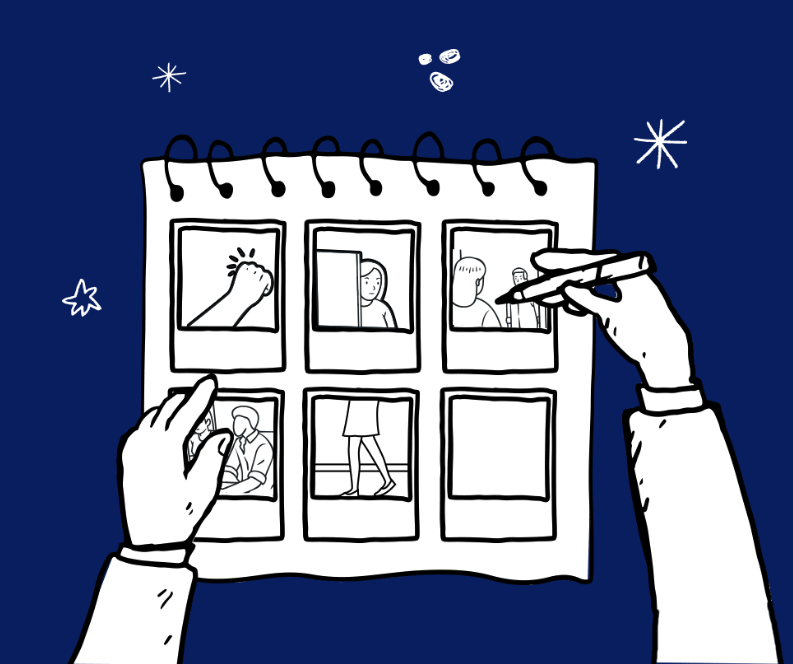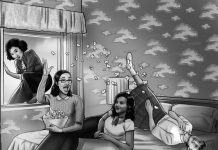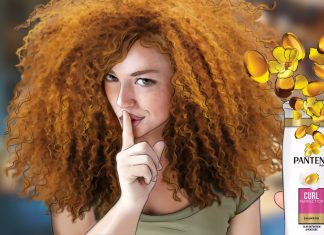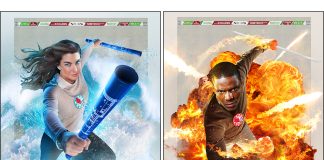In this article, we will discuss the importance of striking a balance between artistic expression and AI automation in the storyboarding process. We explore how artists like you can embrace AI technologies without compromising your unique creative vision.
Let’s start with this first question: What advantages does AI bring to the world of storyboarding?
The Benefits of AI in Storyboarding
- Streamlining the storyboarding process
AI brings the advantage of streamlining the traditionally time-consuming storyboarding process. By automating repetitive tasks such as organizing and arranging storyboard elements, AI allows artists to focus more on the creative aspects. This streamlining frees up valuable time and energy, enabling you to delve deeper into their artistic vision and explore different storytelling possibilities.
- Generating storyboards quickly and efficiently
AI algorithms can generate storyboards rapidly and efficiently, reducing the manual effort required. With AI-powered tools, you can input scene descriptions or dialogue, and the software can automatically generate corresponding visual representations. This speed and efficiency enable you to iterate and experiment with multiple storyboard versions, ultimately leading to a more refined and impactful final product.
- Enhancing visualisation and conceptualization
AI assists in enhancing visualisation and conceptualization by offering advanced tools and technologies. AI is currently more advanced on conceptualisation/scripting than image generation but the technology is progressing fast. Through the use of machine learning and computer vision, AI can analyse and interpret complex visual elements, such as camera angles, lighting, and composition. By providing real-time feedback and visual simulations, AI empowers artists like you to refine your creative decisions and ensure cohesive and engaging storyboards that effectively communicate your artistic vision.
Considering all the benefits mentioned, AI is truly a versatile and valuable tool in storyboarding. However, it is still important to recognize the fundamental role of human creativity and expertise in the process.
The Role of Human Artistry in Storyboarding
Amidst technological advancements, it is crucial to acknowledge and cherish the invaluable role of human creativity in storyboarding. AI may assist in streamlining processes, but it is the artist’s unique perspective, imagination, and artistic flair that breathe life into a storyboard, infusing it with authenticity and emotional depth.
- Artistic Decision-Making and its Impact on Storytelling
Storyboarding is an art form that requires careful deliberation and artistic decision-making. It is through these choices that the storyboard evolves, setting the tone, pacing, and visual narrative of the story. Human artists possess the ability to craft nuanced compositions, select compelling camera angles, and evoke specific emotions, shaping the audience’s experience and ultimately elevating the storytelling process.
- Creating Unique and Personalized Storyboards
Each artist brings their individual style, voice, and vision to the storyboard, resulting in a truly unique and personalised creation. Human artists infuse their personal experiences, cultural perspectives, and storytelling instincts into their work, ensuring that every storyboard stands as a distinct piece of art. This human touch adds depth and resonance, fostering connections between the audience and the story being told.
The power of AI and human creativity go hand and hand, and finding the perfect balance between the two is essential.
Finding the Balance: Human and AI Collaboration
It is essential to recognize the strengths and limitations of AI while utilising it as a complementary tool to amplify artistic expression and optimise the storyboard creation process. Find the balance through:
- Understanding the Limitations of AI in Storyboarding
While AI brings remarkable capabilities to the table, it is crucial to acknowledge its limitations. AI algorithms may struggle with complex creative concepts, subtle nuances, and capturing the full range of human emotions. Recognizing these limitations allows artists to identify areas where human expertise and creativity are indispensable, ensuring a harmonious integration of AI tools into the artistic workflow. AI tools are also still limited in generating consistency in images as well as images with multiple actions or figurative concepts. That’s why an AI storyboard generator like StoryboardHero also offers the option to request hand drawn images for storyboards where AI images face limitations.
- Leveraging AI as a Tool to Enhance Artistic Vision
AI can be a powerful ally in amplifying artistic vision and pushing creative boundaries. By harnessing AI tools, artists can experiment with new techniques, explore alternative perspectives, and quickly iterate on ideas. With AI’s assistance in generating rapid visualisations, artists can free up mental space and time to focus on refining their artistic concepts, ultimately enhancing the quality and impact of their storyboards.
- Collaborative Workflow between Artists and AI Algorithms
Achieving a successful collaboration between artists and AI algorithms requires establishing an effective workflow. This collaboration involves leveraging AI’s efficiency in generating initial storyboards or providing visual suggestions, while artists infuse their creativity and unique insights to refine and customise the output. By embracing a collaborative approach, artists can harness the strengths of AI to complement their artistic skills, resulting in storyboards that showcase the best of both human and AI capabilities.
But, how can we seamlessly integrate AI into our artistic workflow to achieve successful storyboarding outcomes? Here are some valuable tips to consider:
Tips and Strategies for Integrating AI Tools into Your Artistic Workflow
- Identifying Specific Areas Where AI Can Add Value to Storyboarding
Start by evaluating your artistic workflow and identifying specific tasks or areas where AI can bring efficiency or enhance creativity, such as automating repetitive tasks or providing visual suggestions (even if they are not perfect). This targeted approach ensures that AI tools are integrated purposefully and effectively into your artistic process, maximising their impact.
- Researching and Selecting Suitable AI Tools and Software
Take the time to research and explore different AI tools and software available for storyboarding. Look for solutions that align with your specific needs and artistic style. Consider factors such as user-friendliness, compatibility with your existing tools, and the track record of the AI tools in delivering reliable and high-quality results.
- Experimenting and Adapting the Artistic Process for Seamless AI Integration
Approach the integration of AI tools with an open mind and a spirit of experimentation. Start by incorporating AI into smaller, non-critical aspects of your workflow and gradually expand its use. As you experiment and adapt, fine-tune the integration to ensure a seamless transition between human creativity and AI assistance, preserving artistic integrity and maintaining a cohesive artistic vision.
- Iterating and Refining the Collaborative Workflow between Artists and AI Algorithms
Collaboration between artists and AI algorithms is a dynamic process that requires iteration and refinement. Continuously communicate and exchange feedback with the AI tools, making adjustments based on the insights and suggestions they provide. This iterative approach helps artists and AI algorithms develop a mutual understanding, leading to a more effective and productive collaborative workflow.
- Emphasising Human Oversight and Creative Decision-Making in AI-Assisted Storyboarding
Remember that AI tools should serve as aids, not replacements, for human creativity. Maintain a strong sense of human oversight and creative decision-making throughout the process. Regularly evaluate the outputs generated by AI tools and apply your artistic judgement to refine, customise, and add your personal touch to ensure the final storyboards reflect your unique artistic vision.
Conclusion
In the world of storyboarding, finding the balance between artistry and automation holds the key to unleashing limitless creative potential. While AI can enhance efficiency and expand your artistic horizons, it is your unique perspective and creative prowess that truly infuse life into your storyboards.
As we conclude this journey, we encourage you to embrace AI as a creative partner. Harness the remarkable tools it offers while staying true to your artistic vision. Together, you and AI have the power to shape a future of captivating narratives and immersive experiences that inspire audiences worldwide. So, why wait? start your storytelling journey today with these storyboarding tools!














